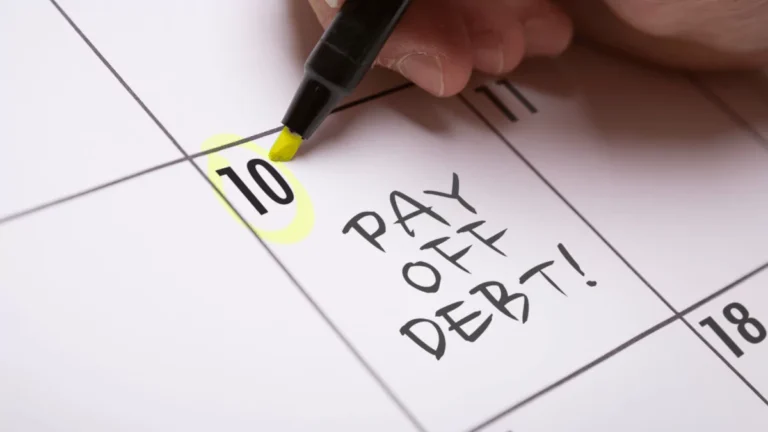If you’re struggling with debt, take comfort in knowing there are ways to regain control. With a solid plan and dedication, pay off debt fast is possible.
Two common strategies people use are the debt snowball method and the debt avalanche method.
Snowball vs. Avalanche: Key Differences
Both require making payments beyond the minimum to eliminate debt faster. While they have key differences, neither is necessarily better—it all depends on what works best for you.
Your choice will depend on your mindset and financial approach. Read on to learn more about these methods and how to begin.
Key Takeaways
- Paying off debt is achievable using either the snowball or avalanche method.
- Focusing on smaller balances first (snowball method) can help build motivation.
- Tackling higher-interest debt first (avalanche method) may reduce overall costs.
- Paying off a loan definitely has a positive influence on financial and mental well-being.
- The most important step is choosing a strategy and committing to it.
Start by Listing Your Debts
Before tackling debt, it’s essential to understand exactly what you owe. Create a detailed list of all loans, including balances on credit cards, personal loans, medical bills, student loans, and car loans. Be sure to include interest rates for each.
Here’s an example:
| Loan Type | Repayment Term | Loan Balance | Interest Rate (APR) | Monthly Payment |
|---|---|---|---|---|
| Credit Card | Revolving | $10,000 | 22% | $200 |
| Car Loan | 72 months | $7,500 | 9% | $135 |
| Personal Loan | 72 months | $15,000 | 12.99% | $301 |
Organizing your debts helps you decide the best repayment approach. (Example provided for reference—your situation may differ.)
Once your list is ready, assess your monthly expenses. Factor in necessities like rent, food, utilities, and minimum debt payments. Missing even a minimum payment could negatively impact your credit score.
Minus your expenses from your monthly net income (take-home pay). Suppose you have $300 left after covering all costs and setting aside some savings. That extra amount can go toward paying down debt.
Understanding the Debt Snowball Method
The debt snowball method focuses on clearing the smallest debt first, regardless of interest rate.
- Looking at the example above, you would:
- Pay the minimum on all debts.
- Apply your extra $300 toward the car loan since it has the smallest balance.
- Continue this until the car loan is paid off.
- Redirect that extra amount to the credit card next, adding it to the minimum payment.
Finally, the combined payments can be used to tackle the personal loan.
This strategy allows you to clear smaller debts quickly, creating momentum. While it might not save as much on interest, the sense of progress can be encouraging.
Understanding the Debt Avalanche Method
The debt avalanche method prioritizes high-interest debts first, potentially saving more money over time.
Following the example above, you would:
- Pay the minimum on all debts.
- Put the extra $300 toward the credit card, which has the highest interest rate (22% APR).
- Once the credit card is cleared, apply that amount to the personal loan.
- Finally, the accumulated payments are used to pay off the car loan.
This approach may take longer to see results but can reduce the total amount paid in interest.
Which Method Works Best?
The debt snowball and avalanche methods have pros and cons, so comparing them can help you determine which would best suit your situation.
You can look into this summary to see which method will work best for you:
Snowball vs. Avalanche: Which Debt Strategy Fits You?
Snowball Method
How: Pay the smallest balance first
Why: Gets rid of small loans faster
Pros: Quicker wins may keep you motivated
Cons: May cost more in the long run
Avalanche Method
How: Pay the highest interest rate first
Why: Reduces total interest paid
Pros: Saves more money over time
Cons: May take longer to feel progress
Depending on your strategy for money, either the debt snowball or avalanche method can work for you.
The Benefits of Paying Down Debt
Paying off debt reduces stress, improves credit, and helps you feel more in control of your future. Whether it takes months or years, every step builds momentum—and confidence.
Reducing debt isn’t just about numbers—it can also improve mental well-being. One survey from the American Psychiatric Association found that 59% of adults feel anxious about personal finances. No matter the method, eliminating debt can bring relief and a greater sense of financial stability.
Three Tips for Success
Regardless of which strategy you choose, keep these points in mind:
- Be realistic about what keeps you motivated. If quick wins help you stay on track, the snowball method might be best. If saving on interest is your priority, consider the avalanche method.
- Stick with your plan. Consistency is the biggest factor in successfully paying off debt.
- Avoid accumulating new debt. Paying down debt is challenging if you continue adding to it. Lifestyle inflation—spending more as your income rises—can quietly sabotage your progress if you’re not careful.
By committing to a strategy that suits you, you can work toward financial freedom and a more secure future.
The Road to Financial Freedom
Paying off debt takes time, but financial relief is within reach with discipline and a clear strategy. Whether you choose the snowball or avalanche method, staying committed will bring you closer to a future free of burdensome payments. The effort you put in today can create lasting financial stability and peace of mind.

